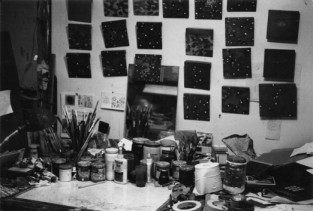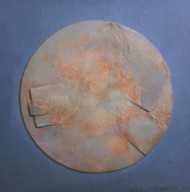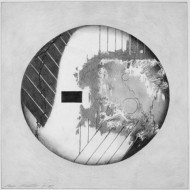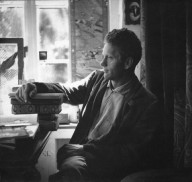| |
Gallery Hours:
Hours 11-6
Thursday-Monday (closed Tuesday & Wednesday)
The Quicksilver Mine Co.
6671 Front St. (Hwy. 116)
Downtown Forestville
PHONE: 707.887.0799
FAX: 707.887.0146
MAIL: P.O. Box 844
Forestville, CA 95436
Email Quicksilver
� Sonoma's Own
The Quicksilver Mine Co.
|
Abstract Realist
Paul Beattie, 1924-1988
February 5 - March 13, 2005
Paul Beattie was born in Bay City, Michigan in 1924. He began his
art career at the Detroit Society of Arts and Crafts in 1945 where
he was exposed to the work of the Impressionists, the Fauves, and
the German Expressionists. Thus inspired, Beattie moved to New York
City where he encountered the influences of Picasso, Matisse,
Pollock, and de Kooning.
In the late 40's and early 50's while living in the evolving art
community of Greenwich Village, Beattie began to work in a more
personal direction. In his painting he imparted a deep-space quality
to what he called "Pollockian" surface-patterned tracery. In 1948 he
received an award in an international art competition sponsored by
Philip Rosenthal-Brooklyn Museum Art School/ Ro-Ko Gallery. He also
exhibited at The Jacques Seligmann Galleries in N.Y.C. in 1949 and
in 1950 participated in a group show, Exhibition of Paintings, at
the Studio 35 with Elaine de Kooning and Richenburg. Beattie's New
York career culminated in a one-man show at the prestigious Hansa
Gallery. He moved to San Francisco with his wife Dee and their first
child in 1954.
On the West Coast, Paul collaborated in a mixed-media,
improvisational manner with George Herms, Arthur Richer, and Wallace
Berman, as well as Larry and Patty Jordan, Bill Spencer, Warner
Jepson, ruth weiss, and Jay De Feo. The 1950's San Francisco jazz
scene found Beattie jamming on his saxophone in North Beach
nightclubs, caught up in the energetic force field of consciousness
that became known as the "Beat Revolution."
During this time, Beattie experimented with collage, sculpture,
constructions, press works, light shows, and filmmaking. The latter
saw fruition in a dozen films distributed by the New York Filmmakers
Cooperative and screened throughout the United States and Europe. He
also exhibited his art in several innovative San Francisco galleries
of the Beat era: the East and West and The 6 in 1955, the New
Mission in 1962, and the Batman in 1963 and 1964.
In late 1963 the Beattie family moved north from San Francisco to
the redwoods of Sonoma County. Surrounded by five children, gardens,
trees, and stars, Paul again collaborated with fellow artists Arthur
Richer and George Hermes making films and creating "Dadaesque"
combinations of poetry and graphics printed on a small 6 X 9 hand
press. He resumed painting, drawing, collage, and making
constructions, reflecting and furthering his interest in Abstract
Expressionism and building on the work he had done in New York City
and San Francisco in the 50's and early 60's.
During the next two decades Beattie continued to exhibit in San
Francisco and Los Angeles while working on his M.A. in Studio Art
(University of California at Berkeley, 1976). From 1974 through 1980
he taught landscape composition and watercolor painting at Santa
Rosa Junior College. In 1975 he was invited to be part of the
exhibition Collage and Assemblage in Southern California at the L.A.
Institute of Contemporary Art (LICA). He also exhibited at the San
Francisco Museum of Modern Art: Painting and Sculpture in
California: The Modern Era (1976); a large solo show, Paul Beattie:
Paintings and Drawings (1980); and the Museum's The 50th Anniversary
exhibition (1984-85).
In addition to creating and exhibiting his art during these years,
Paul and Dee found time together to study astronomy, cosmology, and
physics. Profoundly influenced by quantum physics and the workings
of the cosmos, he wrote an unpublished manuscript, "Art, Aesthetics
and Astrophysics." In it he pointed out many similarities between
art, physics, and the cosmos. This paper was presented by Beattie to
the Modern Language Association in San Francisco in 1979.
At this point in his life Beattie began to see himself as an
"abstract realist." His search for a fresh, original genre and for a
source of imagery which would lend itself to his preference for open
brushwork, to sketch-like qualities in drawing, and to creating
structure through color all led him towards the use of the cloud and
sky-oriented subjects in his art. This artistic form gradually
evolved from landscapes and horizon lines into atmospheric "decks"
and their extensions, helping to satisfy Beattie's interest in
"bringing together the qualities of a completely abstract painting
experience and of a literal (bordering on photographic)
verisimilitude." His attention to qualities of light and color, and
his sensitivity to a non-distorted viewer experience, reinforced the
two-dimensional surface�color intensity increasing with
distance�while offering the viewer samplings of "deep-space"
artistic vision in his work.
In 1980 Thomas Albright, critic for the San Francisco Chronicle,
wrote that Beattie's paintings "...explore cosmological phenomena,
but they simultaneously focus more intently on the various points at
which these phenomena intersect with art-historical elements. Thus
there are stains and patches of irregularly daubed and dappled color
that suggest not only clouds and nebulas but the amorphous
Impressionist surfaces of late Monet�there are lines and rods of
color that imply not only the kinetic movement of magnetic fields,
but the fractured geometry of early Mondrian."
Six months after his death in June 1988, the California Museum of
Art at the Luther Burbank Center in Santa Rosa presented a
retrospective exhibition of Paul Beattie's work. Fellow artist and
guest curator Raymond Barnhart said, "This show�is but a sampling of
an enormous body of work of a man lost to us in the midst of an
unbelievably productive career, a man who has a long record of
superior production, a style and subject matter of his own and a
great diversity of media. Beattie is a genius�whose work is just
waiting to be discovered on a national basis."
Paul Beattie was passionately interested in revitalizing the
pictorial painterly experience. He was intent on ingesting and
transforming the linear quality, surface shapes, and the kinetic
action aspects of Pollack's work as well as the Cubist's faceted
segmenting of the pictorial surface. Beattie strove to extend
Cezanne's approach to interlocking edges and the open brushwork of
Degas, Manet, Rembrandt, and de Kooning, transforming all of these
elements through his interest in astronomy, cosmology, particle
physics, and organic molecular evolutionary progressions.
At the time of his death Beattie was working on what he considered a
very special body of work�a series of three-hundred-and-forty large
graphite drawings of individual terraformed planets. This series was
specifically designed to be exhibited in an ordered progression up
the rotunda staircase in the Guggenheim Museum in New York. Inspired
by a visit to the Museum in the mid-80's, Paul did a great deal of
research into the project, scaling the size and spacing of the
drawings to fill the stairwell from bottom to top. Each planet is
identical to the rest in size, and each manifests Beattie's
life-long artistic struggle between reality and abstractness in his
work. The Large Graphite Planet/Guggenheim series remains intact, a
tribute to Beattie's lifelong melding of art and astronomy, artistic
vision, and scientific focus.

Paul Beattie's studio
|
click on images for larger views

"CP-72.24",
Acrylic/mixed media,
11" x 12", 1981
Paul Beattie's drawings explore with particular
success the nebulous, borderline area
between fact and mystical vision...
—Thomas Albright, San Francisco, 1980

LGP-122.81, 15" x 15", 1987
(Large Graphite Planet series)

Paul Beattie as a young man
Paul Beattie was an artist of rare perception.
From his early intuitive collages to his cosmic drawings and paintings,
he offered glimpses of a world unseen except by him.
A little more time, money, and a little more humanity,
Paul would have been rich and famous.
But we knew a better man, a devoted artist
and a kindly counter-point in today's maddening art world.
—Henry Hopkins (Director), San Francisco Museum
of Modern Art, 1988
Paul's Resume
|
|